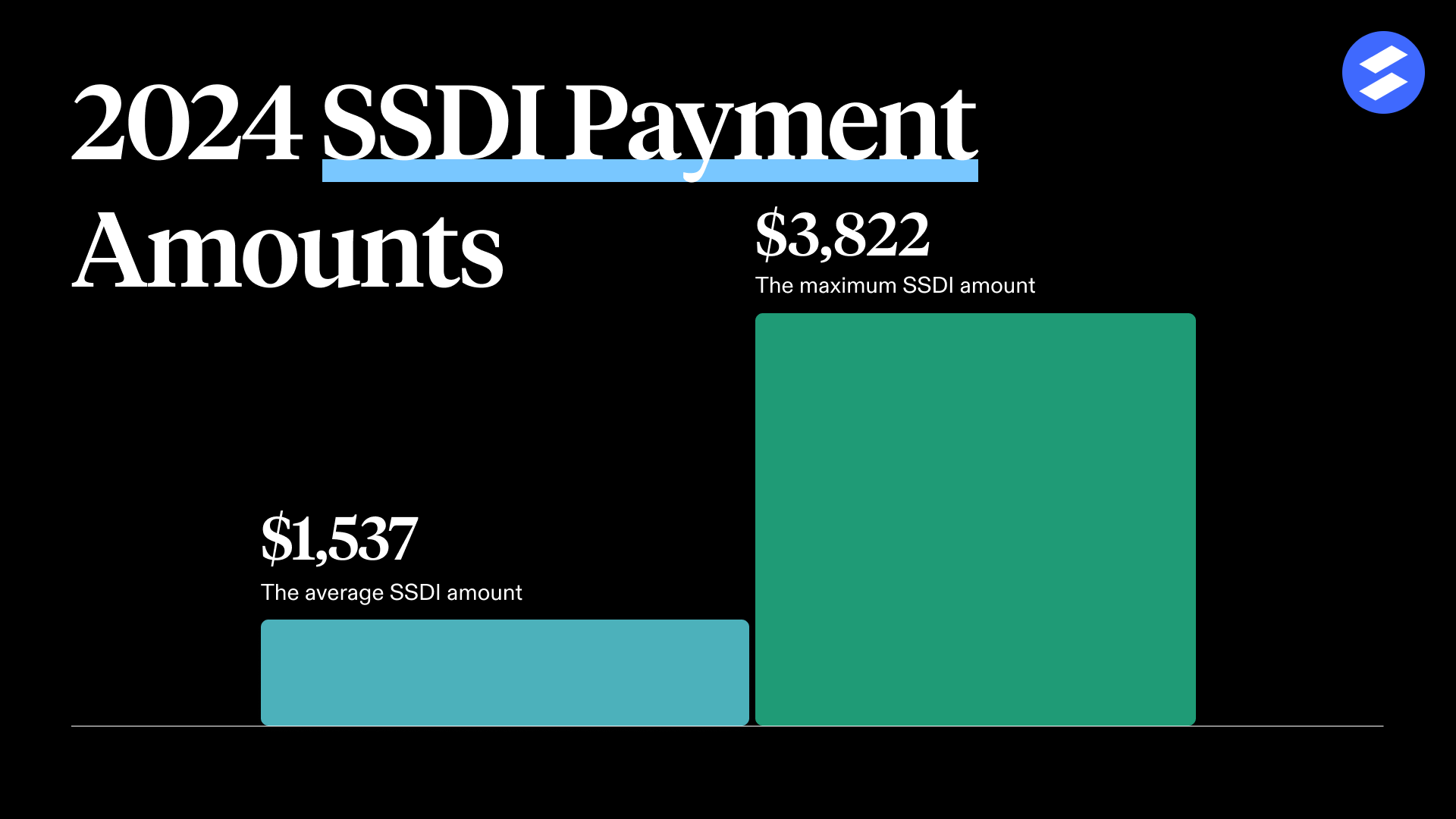When Can You Get Disability Benefits for Sciatica?

Sciatica is often mild but in some cases, it can be severe enough to keep you from working. In 2021, about 2.7 million workers received monthly disability benefits and healthcare for sciatica and similar musculoskeletal diseases.
To help you qualify, we’ll walk you through how the Social Security Administration (SSA) defines sciatica, eligibility requirements, and how to apply if your sciatica meets the criteria.
Is sciatica a disability?
Sciatica can be considered a disability by the SSA if it’s severe enough to interfere with your ability to work, but it often isn’t severe enough on its own. That said, it may be possible to qualify for Social Security disability benefits if you experience other conditions because of or alongside your sciatica.
How the SSA defines sciatica
People with sciatica have a compressed spinal nerve that causes pain in the back, hip, and outer leg. Though sciatica can be mild and resolve on its own, it can trigger more severe symptoms.
The SSA looks for the more advanced signs of sciatica, like difficulty walking or moving and difficulty controlling your bladder or bowels.
Common types of sciatica
There are four types of sciatica that are defined based on how you experience nerve pain:
Acute sciatica
Chronic sciatica
Alternating sciatica
Bilateral sciatica
Can you get disability for sciatica?
Yes, you can get disability benefits for sciatica in certain cases. To qualify, you’ll need medical documentation that shows the severity of your symptoms.
Mild sciatica doesn’t always qualify because the SSA generally holds that someone can continue working while managing their condition. You’re more likely to qualify if you experience sciatica in addition to another qualifying health condition.
Though providing extensive medical evidence is the best way to get approved, working with an experienced disability lawyer will also increase your odds of approval. Applicants with lawyers are three times more likely to get approved for benefits.
Criteria for getting disability with sciatica
Qualifying for disability is challenging. The SSA has extensive criteria for sciatica, and many people with mild sciatica won’t qualify. If your sciatica is mild or you’ve suffered a flare-up after an injury and missed work, consider seeking short-term disability through workers’ comp instead.
Before you apply, consider whether or not your sciatica meets the three conditions listed below. If possible, you should also look to get imaging results — MRI, X-ray, CT scan, or EMG — showing nerve compromise due to your sciatica.
1. You have one or more of the following symptoms radiating from your back or hips:
Pain
Tingling or prickling sensations
Muscle fatigue
2. You experience the following; they’re present during a physical exam or diagnostic test; and you have medical evidence of the first two symptoms below in addition to either the third or fourth:
Muscle weakness
Signs of nerve irritation, tension, or compression
Sensory changes evidenced by decreased sensation or sensory nerve deficit
Decreased reflexes
3. You experience limited movement lasting or expected to last at least 12 consecutive months, and you have medical documentation of at least one of the following:
The need for a walker, cane, bilateral canes or crutches, or a wheeled and seated mobility device that requires both hands
An inability to use at least one arm to independently complete work-related activities and a need for one handheld assistive device that requires the other arm or a wheeled and seated mobility device
The inability to use both arms to independently do work-related activities involving fine and gross movements
Questions to ask yourself before applying
The SSA may reward you with disability benefits if you can answer yes to most of the following:
Do you experience numbness or tingling in your extremities?
Do you have difficulty walking or standing?
Do you require assistive devices like a cane or walker?
Do you experience discomfort while sitting or standing?
Do you have limited mobility?
Will you require surgery? If you’ve already had surgery, are your symptoms still expected to continue for the next year or longer?
Have you met with a specialist — such as a chiropractor, neurosurgeon, orthopedic surgeon, physical therapist, or spine specialist — to help you manage your sciatica and its complications?
My sciatica meets the criteria. Now what?
If your sciatica meets the SSA’s criteria, you’re ready to apply for disability benefits.
You can apply even if you’re questioning whether or not your sciatica will qualify, but the application is long and may not be worth the time and effort if you don’t think you’re likely to qualify. Here’s our advice:
Apply now if:
You have been diagnosed with sciatica AND
You have chronic pain radiating from your back and hips AND
You experience muscle weakness and other neurological symptoms AND
You have limited mobility in your arms or legs and require an assistive device
Consider waiting and applying later if:
You have sciatica but it doesn’t significantly limit your movement OR
Your sciatica doesn’t interfere with your work though you think it will if it progresses
Probably don’t apply if:
Your sciatica is uncomfortable but it doesn’t stop you from working OR
You’re working and earning more than about $1,550 per month
You can also find out whether or not you’ll qualify with our free 2-minute disability quiz. If you do qualify, we can match you with a disability lawyer who can work to increase your odds of approval. (You’ll only pay them if you get approved for benefits.)
Which type of benefits should you apply for?
You can apply for two different benefits programs: Social Security Disability Insurance (SSDI) and Supplemental Security Income (SSI). If you’ve worked at least five of the last 10 years, you likely meet the qualifications for SSDI.
You’ll receive higher benefit payments through SSDI and you’ll be enrolled in Medicare. If you haven’t worked much in recent years and if you have little to no monthly income or assets, you may qualify for SSI. SSI offers monthly payments of up to $943 in 2024 plus Medicaid.
SSDI and SSI share an application, so you can also apply for both. Some applicants even qualify to receive both at the same time.
How much is a disability check for sciatica?
People with sciatica and other musculoskeletal disorders receive an average monthly check of $1,450.61. Your actual check size may vary depending on your work and income history.
Regardless of your condition, the maximum benefit for SSDI is about $3,822 per month, while SSI offers a maximum monthly benefit of $943 in 2024.
Learn more about how much you can make from disability benefits.

What if my sciatica doesn’t meet the criteria?
If you don’t think your sciatica meets the criteria, you can still apply. There’s no penalty for applying and it may still be worth it if you can’t work because of your sciatica.
The reality is that even if you do meet the criteria, qualifying for Social Security disability benefits is difficult. Only 20% of applicants get approved on their first try.
But we almost always recommend that you appeal that decision. More than 50% of applicants got approved after they appealed their case in front of a judge in 2022.
You can also get even more tips on the application process with our step-by-step guide to applying for disability. Also check out our helpful resources for people with disabilities if you need financial assistance, legal assistance, or help affording food and housing while you apply.
Find disability help in your state
Other conditions that can qualify for disability:
Inflammatory bowel disease (IBD) | OCD (obsessive-compulsive disorder) |
Related resources:
What Medical Conditions Qualify for Social Security Disability?
Disability for Back Pain: How to Qualify and Apply for SSDI

Jackie Jakab
Lead Attorney
For Clients
Fields of Law
For Lawyers
At the bottom of many websites, you'll find a small disclaimer: "We are not a law firm and are not qualified to give legal advice." If you see this, run the other way. These people can't help you: they're prohibited by law from giving meaningful advice, recommending specific lawyers, or even telling you whether you need a lawyer at all.
There’s no disclaimer here: Atticus is a law firm, and we are qualified to give legal advice. We can answer your most pressing questions, make clear recommendations, and search far and wide to find the right lawyer for you.
Two important things to note: If we give you legal advice, it will be through a lawyer on our staff communicating with you directly. (Don't make important decisions about your case based solely on this or any other website.) And if we take you on as a client, it will be through a document you sign. (No attorney-client relationship arises from using this site or calling us.)
- © 2025 Atticus Law, P.C.
Terms | Privacy | California Privacy | CHD Policy | Disclaimer | This website is lawyer advertising.